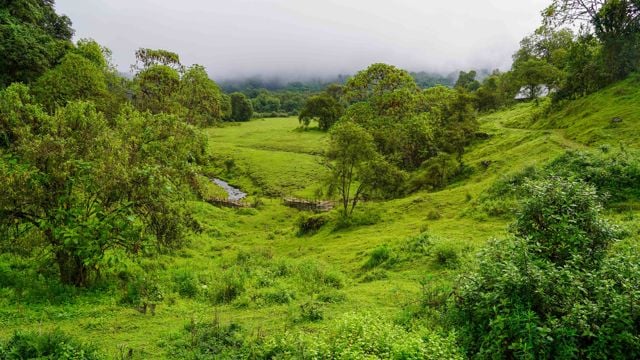FAQ: Building Climate Resilience in Developing Countries: Ecoystem Based Adaptation and Innovative Finance

The national park in the Bale Mountains in Ethiopia – high-altitude rainforest. This is near Bale Mountain Lodge, at approximately 3,000 meters elevation.
Frequently asked questions:
Q: We are an umbrella organization, with different legal entities in different countries. Can the umbrella only apply, or can the different legal entities in different countries submit an application?
A: We regard applicants as legal entities – so as long as all applications are submited and registered by different legal entities, they are regarded as individual applicants and applications.
Q: Is it possible to lead on one proposal, and participate as a sub-awardee in a second proposal?
A: Yes – see above.
Q: Can we submit one application for each window?
A: Yes
Q: What’s the timeline?
A: Deadline for concept notes 5th of June 13.00 CET.
Applicants can expect either an invitation to the next round (full application), or a notice of rejection by June 30th.
The deadline for the full proposal will be set to medio September.
Q: Are there format requirements for budget and result framework?
A: No such requirements for the concept note – other than what’s specifically requested in the call. Examples can be at the web pages of the Norwegian Ministry of Foreign Affairs: Forms and guides - regjeringen.no
Q: Do we need to include other income sources for this project, annual breakdown and overhead percentages for the indicative budget for the concept note?
A: Yes. This would be the level of detail required in the indicative budget of at the concept note stage.
Q: Does partnerships need to be formalized in the proposal stage?
A: At the concept note (phase 1), no.
Q: What is the maximum length of a grant period?
A: Norad has, and does enter into longer agreements, but for this specific call, projects of 3 years and less will be prioritized.
Q: Can the concept note include annexes?
A: Only what’s requested in the call for proposal is to be included. Note that the applicant is required to register certain information in the grants portal before submitting the concept note.
Q: Will those with existing agreements with Norad/MFA be prioritized?
A: It will not affect the prioritization, whether the applicant has current or previous agreements with Norad or the MFA. If Norad or the MFA has previous experience with the applicant, such experience will be part of the assessment.
Q: Why have you chosen Ethiopia and Tanzania as the priority countries in window 1?
A: Norway has a long-standing collaboration with both country, and has a bi-lateral climate partnership with Tanzania. We see the opportunity for this call to greatly support and contribute to existing strategies, frameworks, NDC’s, NAP’s, NBSAP’s and initatives in both countries.
Q: Can we submit an application for another country that is not in Sub-Saharan Africa in Window 2?
A: If projects are geographically specific, countries in sub-Saharan Africa will be prioritized.
Q: If we submit an application aimed at both windows, would a proposed budget combining the 60 million in window 1, and 25 million in window 2 to a total of 85 million be accepted?
A: Yes
Q: Are UK organizations eligble to apply, either as a lead, or in a consortium?
A: Yes
Q: Can UN organizations lead and application, lead a consortium or participate as a sub-awardee/part of a consortium?
A: No
Q: Do you require us to have the project audited by an external firm?
A: Audit shall be carried out by an independent chartered/certified or state-authorised public accountant (auditor)
Q: Are there specific rules determining how staff costs need to be calculated/shown?
A: Direct costs for salaries include insurance, pension, vacation, and similar benefits.
What is not included in this budget line, that has to be included as indirect costs are expenses related to general internal capacity building, attending conferences, etc – unless specifically stated and relevant for the project.
Q: What is considered indirect costs?
A: Indirect operating costs (IOC or overheads) are the costs associated with the general administration of the grant recipient’s organization. These are costs that accrue to the organization independent of its participation in a specific project
For contractors and local implementing partners – we cover reasonable indirect costs originating with them as direct costs.
Q: Research instiutes often operate with a higher recovery rate than 7% - can we ask for higher indirect costs?
A: Many research institutes, both public and private, apply a full-cost model to their daily and hourly rates (these rates include indirect operating costs which usually exceed 7% of the direct operating costs). For Norwegian research institutes it is possible to apply these rates if they have been pre-approved by The Research Council of Norway (Forskningsrådet). No additional indirect costs can then be applied. If there is no pre-approval from the Research Council, the general rule of max 7% applies.
Q: Could the grant be used to launch a revolving fund mechanism?
A: The grant could be considered under such use, as long as the full grant amount is spent for the purpose of the agreement on a continuous basis. Storing the grant on an endowment account, where only proceeds are invested, will not be allowed.
Q: How are target countries prioritized?
A: Window 1: Tanzania and Ethiopia will be prioritized
Window 2: All developing countries are eligible, but if geography specific, Sub-Saharan Africa will be given priority. Within Sub-Saharan Africa, the least developed countries (LDC’s) will be further prioritized.